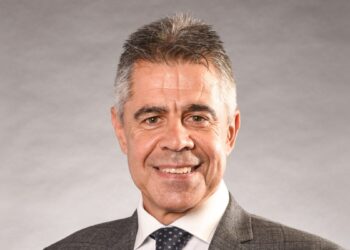Speaking to SMSF Adviser sister title Accountants Daily, CPA general manager of external affairs Paul Drum said that ASIC’s industry funding model is not fit for purpose, and may be forcing professionals out of the market, particularly smaller players.
He said that the high costs would lead to further market concentration, in turn pushing up prices, and discouraging new entrants into the sector.
“Who should pay for FASEA, ASIC, or to be a registered company liquidator, to be a registered company auditor, to be an SMSF auditor?” Mr Drum said.
“The user should pay because the user gets the benefit, not the person that is actually providing the service.”
In its pre-budget submission, CPA has urged the government to move away from a full cost recovery funding model and instead implement a partial cost recovery model, calling for a reinstatement of funding previously cut from ASIC’s budget.
“The fees may motivate behaviours not in the public interest. For example, charging SMSF auditors cancellation of registration fees at $899 may discourage inactive auditors or those not maintaining necessary levels of competency from cancelling their registration and create increased costs for ASIC in deregistering them through enforcement action,” CPA said.
Further, the professional body has called for additional funding for the Tax Practitioners Board (TPB) but criticised the practitioner fees hike announced in last year’s federal budget to fund such a measure.
“Given that a well-functioning and regulated profession is critical to the tax system and is therefore of benefit to the broader community, such an increase in funding should primarily come direct from taxpayers,” the submission said.
“We are strongly opposed to the application of a full cost recovery model on the TPB. The primary function of the TPB is to regulate tax practitioners to protect consumers — it is therefore consumers that primarily benefit from the work of the TPB, and so, the public should continue to be the main source of funding for the TPB.
“Further, many tax practitioners undertake other regulated roles such as SMSF auditors and/or provide financial advisory services and are already facing large increases in regulatory charges from multiple sources. It is essential that this cumulative impact of higher regulatory charges on professional accountants offering services beyond tax service, be considered.”
Earlier this month, the IPA’s Tony Greco said that regulator funding should be a priority for the government following the final report of the Hayne royal commission.
Mr Greco said that the underfunding of the regulators contributed in part of many of the shortcomings found in the report, calling for the government to relook at boosting funding for the regulators.
“The Tax Practitioners Board is a good case in point, where they’ve been screaming for resources to do the job and they’ve gone back to Treasury and they’ve been basically cut at the knees on previous attempts until they got a lifeline this year,” Mr Greco said.
“It gives you an example of how hamstrung some regulators are, and I think the same can be said about ASIC. Part of the issues that are unravelling or have unravelled has got to do with resourcing and it won’t answer for all the deficiencies that are happening in relation to the findings, but certainly part of the problem has been the resourcing.”



As usual ASIC and regulator are just making up another set off to cover their wage increases , nothing to do with improved efficiency of their performance or monitoring of the SMSF’s, I found it ridiculous and I will be cancelling my audit licence more likely too.
This is uneconomical to small business owners (read, tax agents/auditors/ limited licence holders) and my view is, it is all pushed by big4 to get all work done in house by them. My two pence only.
Am hearing you, Angela. Far easier for the regulator to deal with JUST large businesses who have the economic resources to do everything push-button. IT-to-IT is cheaper for the Australian Government – which is why they are pushing all services to a 100% online model. So much for small businesses being the life-blood of Australia. Little Wonder that the youth unemployment is some areas is over 25% Dwindling numbers of small business who would likely employ the youth in regional Australia.
I lodged a complaint with ASIC. To their credit they replied within 24 hours. However, the advice was their funding metrics model was actually determined by Treasury, so I needed to complain to Treasury. Whilst this was in relation to Financial Advisors fees – a limited licensee has identical costs to a full licensee, which I felt unreasonable, having a charge to cancel your registration is even more ludicrous. I think it is time the professional associations take these matters to Tribunal/Court. An obvious reality check is required by the government in relation to the costs they are charging. Auditors provide the service – yes they get a fee – but the service is essential. Without their skills and independence this system would not have the level of integrity it does.
I tried to resign as a SMSF auditor last year effective as of 30 June 2018 to avoid the fee and ASIC staff told me I could not nominate a date of resignation. Evidently the resignation date is when they get around to it which is ridiculous. My registration was up in July 2018 and I did not renew my registration. I am waiting for them to apply enforcement action nine months on. I will not pay the fee.I did my bit by ceasing work before 30 June 2018 and declined some audits in July 2018 before my registration expired and before my PI insurance expired.
I agree wholeheartedly, and I support the CPA protest. The fee increases will make very small practices uneconomic. As for the ridiculous cancellation fee, if I am forced out of the industry by the ASIC fees, then I will tell them what they can do with their cancellation fee.
Similar rip off happening with supervisory levy, approx 600,000 SMSF x $259 = say $155 Million. With this amount you can have around 2,200 staff at average wage ($70k)… so each staff is supervising around 272 SMSF – not sure what they are supervising, very inefficient… an the accountant in public practice do all the work and can prepare and finalise more than 200 SMSFs tax return a year.
How can an auditor cancellation fee cost $899.00 using a full cost recovery funding model. Either someone is charging an exorbitant hourly rate or there are major inefficiencies. Inefficiencies in a market get weeded out by competition. There is no competition for ASIC so it may be a combination of the two. Either way, the innocent should not be ripped off by the government.